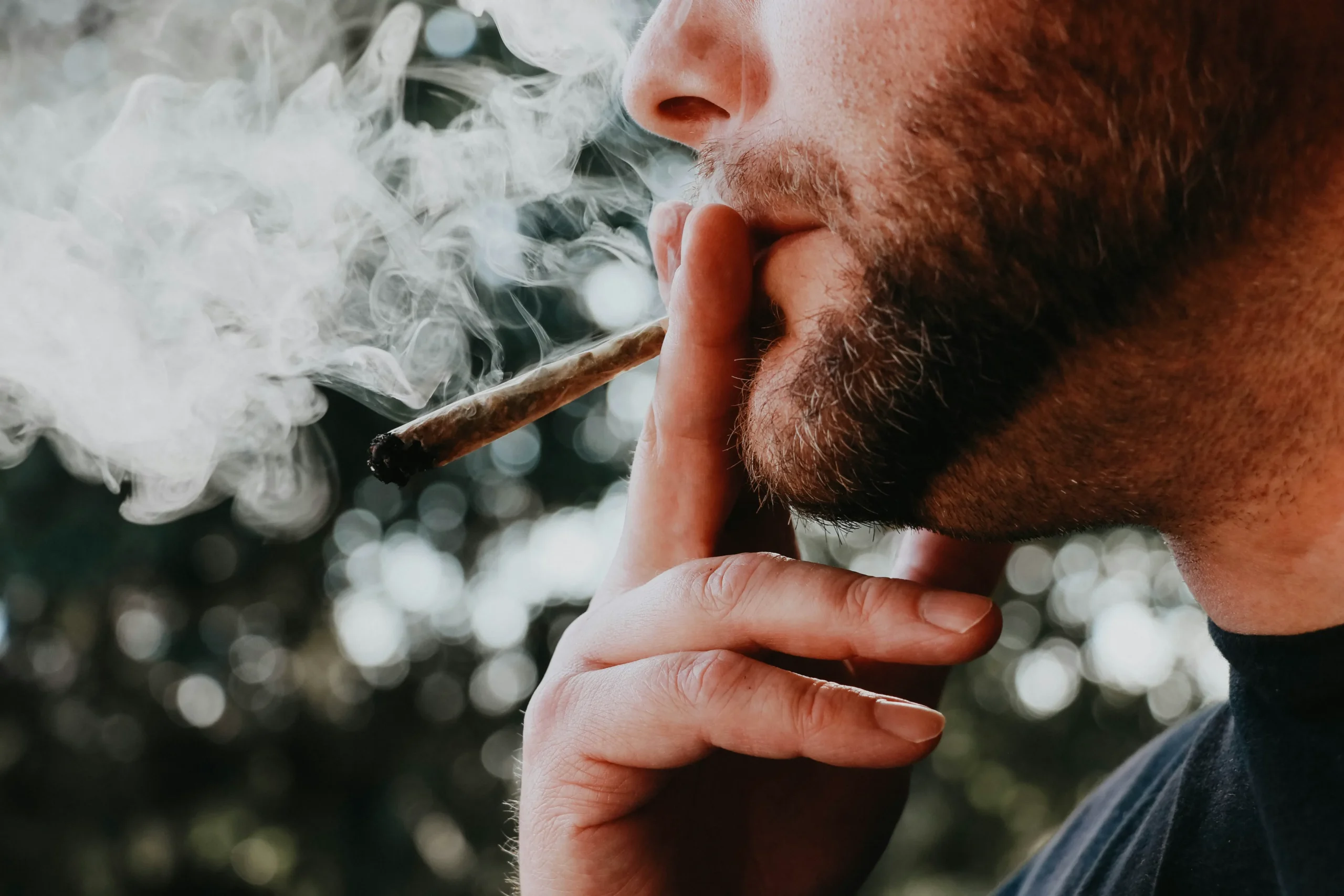In the ongoing exploration of how various substances impact brain function, we now turn to cannabis. What are the implications if Jack chooses an after-lunch joint instead of a beer? Given that cannabis consumption is legal in Jack’s place of residence, why might he reconsider this choice? Again, let us take a look at some of the things that will happen here and at which levels.
First of all, how does cannabis enter the body and in which form? Cannabis itself is not the name for a chemical molecule, but the name for the drug derived from plants with the same name (Cannabis sativa, cannabis indica etc.). The most relevant ingredient in cannabis is THC, tetra-hydro-cannabinol (along with another relevant compound called CBD, cannabidiol). Contrary to alcohol, THC is not water soluble, but fat soluble. It can be consumed in many different ways (smoking, vaping, in edible form such as cookies etc.).
Depending on how it is consumed, its entry can vary. In any case, compared to alcohol, entry of THC is quite delayed and nonlinear, making its uptake much less straightforward and predictable than for water soluble agents such as alcohol. It may also linger around in several parts of the body longer than alcohol, without affecting cognition and behavior. What it does, however, at the end, is reaching the brain as forceful as alcohol does, with an impact fully on par with alcohol:
Cannabinoid Compounds Interaction
- THC and CBD: Once in the brain, these cannabinoids interact with the body’s endocannabinoid receptors (dedicated receptors for cannabinoids produced by the brain or body itself).
THC Binding
- Receptors: THC binds to cannabinoid receptors (CB1) in the brain and body.
- Neurotransmitter Release: This binding alters neurotransmitter release.
- Neuronal Signaling: Impacts neuronal signaling and synaptic plasticity, affecting learning and memory processes.
- Other Cells: CB1 receptors are also found outside the brain, so THC can affect various cells and their functions.
THC Effects
- Inhibitory Action: THC acts as an agonist for endocannabinoid receptors, with overall inhibitory effects.
- Classification Challenge: THC’s effects are complex, making its classification as a stimulant or depressant less clear.
- Complexity of CB1 receptors: Beyond simply allowing influx of ions into the cell, CB1 receptors can enable retrograde signaling, modulate neurotransmitter release, and influence synaptic plasticity, which underlies cellular and neuronal learning.
On the level of brain areas, there is an expansive array of areas affected by THC, from the cortex down to subcortical areas. The brain areas most affected by cannabis are the following:
- The hippocampus is involved in memory formation and navigation, and cannabis use can impair memory consolidation and spatial memory.
- The prefrontal cortex regulates decision-making, impulse control, and emotional processing. There the amygdala plays a role in emotion regulation, and cannabis use can alter emotional processing and increase the risk of anxiety and mood disorders. Changes in the interaction between prefrontal cortex and amygdala may also contribute to feelings of paranoia.
- The nucleus accumbens is part of the brain’s reward system, and cannabis can enhance dopamine release in this region, contributing to the drug’s (more long-term) reinforcing effects and potential for addiction.
Systemically, Cannabis affects various bodily systems, including the cardiovascular, respiratory, and immune systems. Similar to alcohol, acute cannabis use can cause an increase in heart rate and blood pressure. Its vasodilating effects can lead to red eyes. Behaviorally, we can summarize the following effects:
- THC induces feelings of pleasure (up to euphoria) and relaxation. It distorts sensory perception and impairs short-term memory and cognitive function. It acts stimulating for appetite.
- THC reduces motor coordination and increases reaction times. Generally, it alters the perception of time (time passes slower than usual). It can induce anxiety and paranoia in some individuals (not well understood).
- Related to this, it may also affect sociability and interpersonal interactions (usually reducing them).
- Finally, it can act sedating, up to inducing lethargy.
So, even if it may not be illegal, the idea of taking a spliff while working is definitely a bad idea. With a bit of imagination and bad luck, a lot of the consequences we just walked through can render a productive day at the construction site a catastrophe in just a fraction of a second.
This blog is part of a larger series written by Sightic’s own Dr. Robert Becker, PhD in Medical Neuroscience, where we explore the remarkable capabilities of the human brain and the impact of various substances on its functions.
